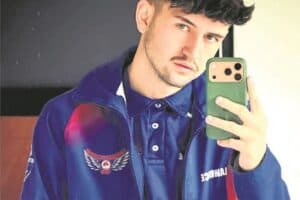Energy drinks marketers are always going to try something out-the-box.

In retrospect, the whole marketing strategy behind the Prime energy drink was clever and possibly orchestrated by a classic marketing mastermind. Let’s be honest, none of us really knew how much we were being manipulated until those rather average-looking bottles hit the shelves at Checkers for R39.99.
Yes, South Africa – especially the youth of this land – you were played like a fiddle. Let this be a lesson to you. The pied piper – ie TikTok and YouTube – piped and you danced… you floated across those aisles and swiped your parents’ credit cards, paying R400 for a bottle of ordinary fruit water that cost less than 20 bucks a pop to make. Why? All because you bought into the hype.
ALSO READ: WATCH: SA tweens and teens queue up as Prime energy drink hits shelves
But, it’s pretty clever how the makers of Prime stepped up the hype. Let’s look at how it all unfolded from the very beginning.
Congo brands
The drink is manufactured by a company called Prime Hydration LLC, which is affiliated with Congo Brands, co-owned by American businessmen Max Clemons and Trey Steiger. Congo Brands is also the manufacturer behind other energy drinks like 3D.

The ingredients that make up this drink are fairly basic and found in most of your store-bought energy drinks. Sugar, coconut water, BCAA (a suppose muscle building supplement), electrolytes (the stuff you find in a sachet of rehydrate at R21 each), plus vitamins and antioxidants.
Why so expensive?
So what made this drink so expensive?
Definitely not the manufacturing process. This was by no means extracted from the fountain of youth itself or sprouted up as a spring on Mount Olympus as the nectar of the gods. It was purely the endorsement.
Before the product could even be pitched to stockists, the manufacturer went to two influencers – Logan Paul and KSI. Both of them have enormous social media followings – particularly in the male teenage category – just the kind of market to buy into the energy supplement, muscle building craze.
Watch the videos the influencers released:
With more than 100 million social media followers combined, the idea of the energy drink was noticed. Scores of loyal fans were going out there to get their hands on this drink – that was actually not yet released on a commercial scale.
Supply and demand
Thus came the powerful play of supply and demand. As more and more fans sought this drink from the limited suppliers, the higher and higher the price went.
Actually securing a bottle was difficult. As such, those who were seen in possession of it acquired some sort of elite social status. In an article titled: “The playground Prime craze is a lesson in modern marketing”, Financial Times states that in London, children who had only used Prime bottles filled with water were able to gain higher status among their peers.
Now, the price was never justified by any of these social media influencers. It was just pitched as trendy and effective.
Shock factor
The price soon hit R700 a pop and the fact that people were prepared to pay this amount became the shock factor.
Soon, parents were taking to social media to hate on the costly trend their children were buying into, without realising that they were perpetuating the hype.
ALSO READ: Did you pay R500 for a sip of Prime? Prepare to kick yourself
Not long after, the narrative changes as everyone wants to know why is it so expensive? What was so special about this drink? The answer was nothing. But no one was really saying it loudly enough. They were more flabbergasted by the price it was selling for.
Meanwhile….
While this conversation was going on, the manufacturers were signing deals with major retailers to carry the stock. It was agreed that it would be sold at a small mark-up on the overall production costs. But no body bothered to tell you, the consumer.
Instead, you walked into Checkers and saw it now being sold for R39.99. Still well above the price of a typical can of Monster or Red Bull, but way, way below the R700 people initially paid. What a bargain, you think, and put one in your trolley. It’s affordable enough to see for yourself if it really tastes as good as its price suggests.
Sorry to say, but….
Not the first
But don’t worry. This was not the first time some clever marketing campaign burst on the scene, coaxing the youth to buy a hyped up energy drink.
In 2004, in the UK, Jonnie Shearer created an energy drink supposedly named after a cat – but we South Africans know better.
Named ‘Pussy’, the carbonated energy drink contains water, sugar, grape juice, and a mixture of herbs and other fruit and none of the other stuff you’re actually thinking about.

Shearer was said to have gone to bars and clubs to market the product himself, allegedly asking revellers “Have you tasted the new pussy juice?”. The dirty phrase caught on and youth were buying the product just for the excuse to say the taboo catch line.
ALSO READ: WTF is Prime Drink and why does it cost R500 a pop?
By 2011, Pussy was sold in 3 000 shops in the UK, including Tesco and Selfridges, and exported to 18 countries – South Africa was one of them. By April 2012, Pussy sales had increased to 500 000 a month – just so students could ask each other if they have tasted Pussy.







